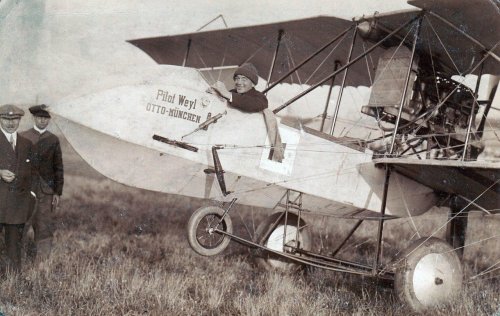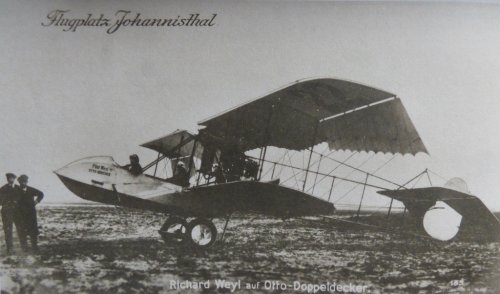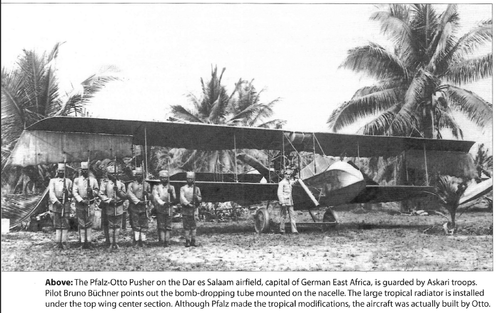- Joined
- 28 January 2008
- Messages
- 635
- Reaction score
- 512
Otto Doppeldecker (1912-13)
Gustav Otto was holder of the 43rd German pilots licence and had bought a Bleriot monoplane in 1910. Gustav Otto Flugmaschinenfabrik, founded in 1910 by Gustav Otto, was one of the pioneering aircraft producers in pre-war Germany. In 1922 Otto Flug was reorganized into Bayerische Flugzeugwerke. Later, Otto established another company named AGO (Aviatiker Gustav Otto) Flugzeugwerke at Berlin's Johannisthal field.
The Otto firm not only constructed his own designs but also built other designers machines (for instance the Oskar Wittenstein Triplane) and also offered flight training services. One of the most famous students of Gustav Otto was Ernst Udet who earned his pilots license from private training with Otto.
Otto Flugmaschinenfabrik (1910-1922) known variants:
Otto-Alberti Doppeldecker (based on a Farman biplane 1910)
Otto Doppeldecker (1912)
Otto B
Otto B.I
Otto C
Otto C.I (Appeared in 1916 - 13 Otto C.I twin-boom aircraft were delivered to Bulgaria)
Otto C.II
The Otto biplane twin-boom design appeared in several guises, culminating in the Otto M in 1913-14 military reconnaissance biplane.
Richard Weyl was the factory pilot of Gustav Otto Flugmaschinenfabrik in Munich. He had started his career in aviation as a mechanic Richard Weyl. He gained the 109th German pilot's license on 9th September 1911.
The Otto Doppeldecker was a open fuselage pusher biplane with an accommodation pod in front of the engine. The lower wing faired into the fuselage nacelle. Weyl was entered by the Otto company as a participant in several air races and competitions.
The photographs are of Weyl in his Otto Doppeldecker at Gelsenkirchen in August 1912 and at Berlin the following year (postcard).
Richard Weyl died in 1947 in Munich.
Sources:
Pioniere der Fruhen Luftfahrt by Schmitt and Schwipps (Gondrom) ISBN 3-8112-1189-7
Notes from the BMW Archive
Gustav Otto was holder of the 43rd German pilots licence and had bought a Bleriot monoplane in 1910. Gustav Otto Flugmaschinenfabrik, founded in 1910 by Gustav Otto, was one of the pioneering aircraft producers in pre-war Germany. In 1922 Otto Flug was reorganized into Bayerische Flugzeugwerke. Later, Otto established another company named AGO (Aviatiker Gustav Otto) Flugzeugwerke at Berlin's Johannisthal field.
The Otto firm not only constructed his own designs but also built other designers machines (for instance the Oskar Wittenstein Triplane) and also offered flight training services. One of the most famous students of Gustav Otto was Ernst Udet who earned his pilots license from private training with Otto.
Otto Flugmaschinenfabrik (1910-1922) known variants:
Otto-Alberti Doppeldecker (based on a Farman biplane 1910)
Otto Doppeldecker (1912)
Otto B
Otto B.I
Otto C
Otto C.I (Appeared in 1916 - 13 Otto C.I twin-boom aircraft were delivered to Bulgaria)
Otto C.II
The Otto biplane twin-boom design appeared in several guises, culminating in the Otto M in 1913-14 military reconnaissance biplane.
Richard Weyl was the factory pilot of Gustav Otto Flugmaschinenfabrik in Munich. He had started his career in aviation as a mechanic Richard Weyl. He gained the 109th German pilot's license on 9th September 1911.
The Otto Doppeldecker was a open fuselage pusher biplane with an accommodation pod in front of the engine. The lower wing faired into the fuselage nacelle. Weyl was entered by the Otto company as a participant in several air races and competitions.
The photographs are of Weyl in his Otto Doppeldecker at Gelsenkirchen in August 1912 and at Berlin the following year (postcard).
Richard Weyl died in 1947 in Munich.
Sources:
Pioniere der Fruhen Luftfahrt by Schmitt and Schwipps (Gondrom) ISBN 3-8112-1189-7
Notes from the BMW Archive



